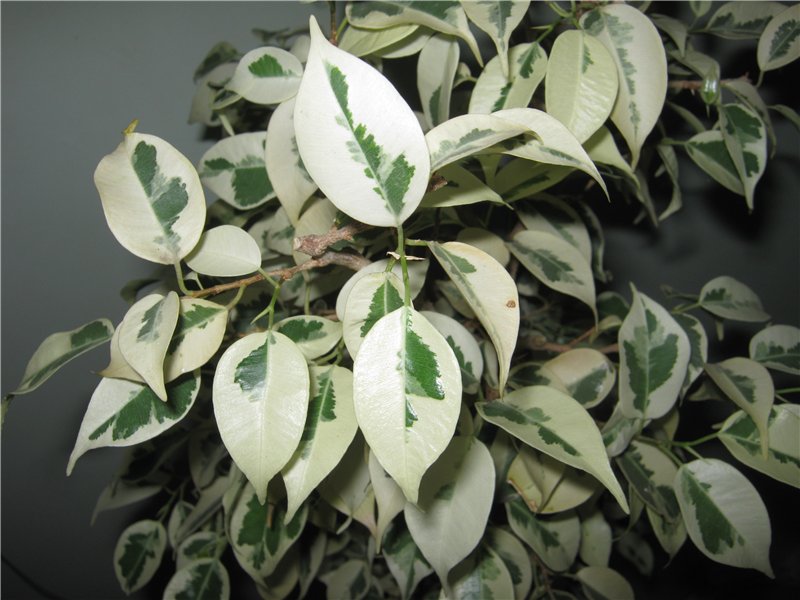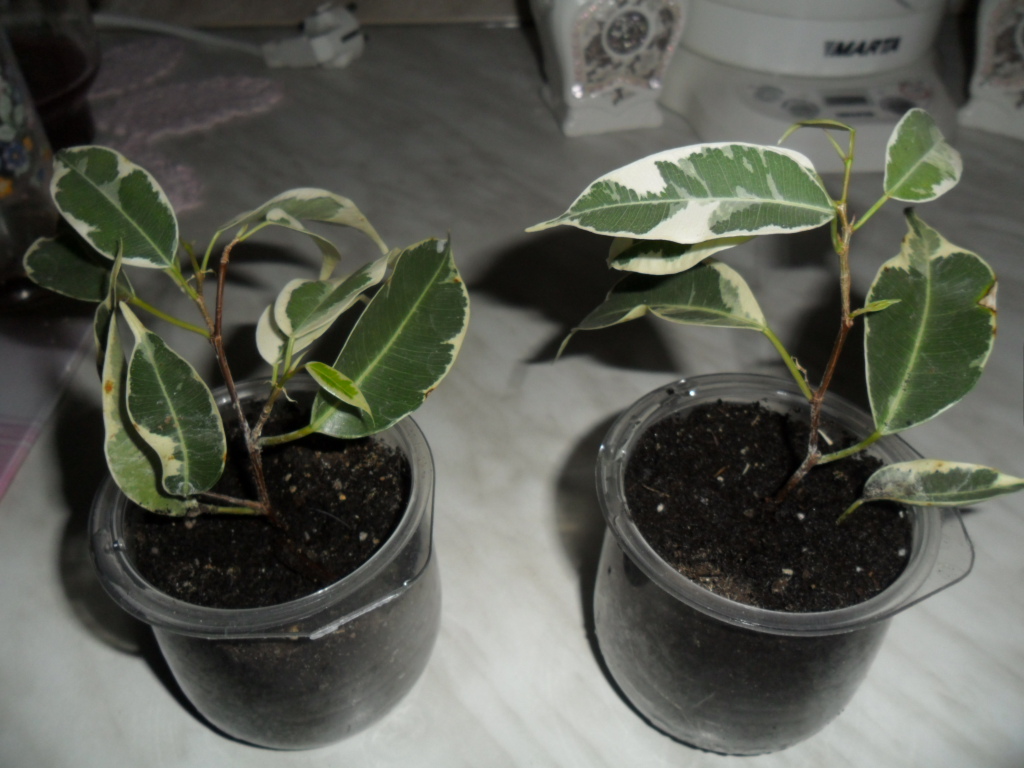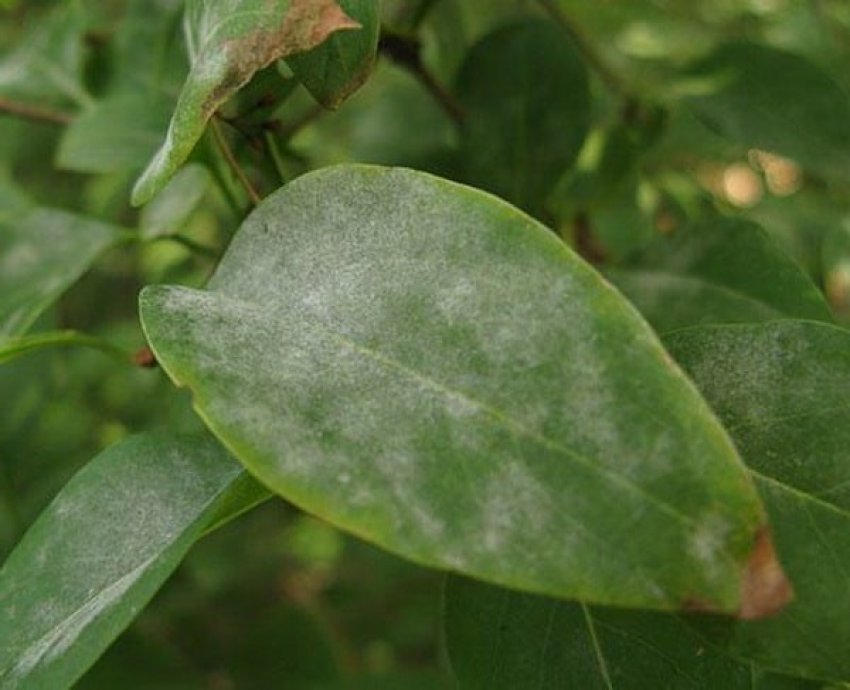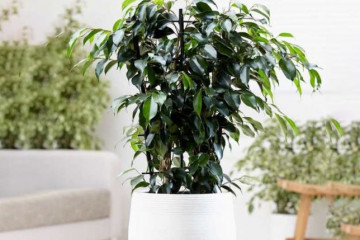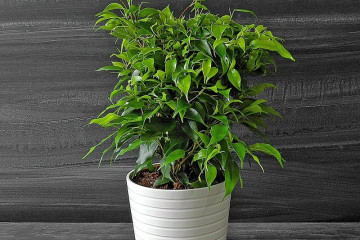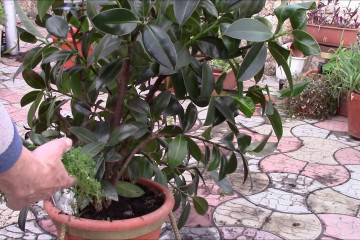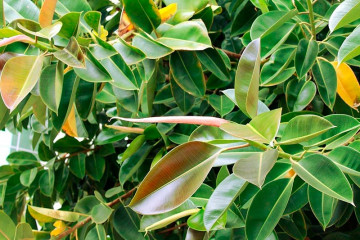Ficus Starlight - variety description, care
Content:
Ficuses can be called one of the most common indoor plants. They fit perfectly into any interior and are not capricious in their care. Among the varieties of varieties, you can stop your choice on the ficus Starlight.
What does the ficus Starlight look like, which family it belongs to
Ficus Starlight (Latin name ficus starlight) belongs to the Mulberry family. It belongs to the Benjamin species. A distinctive feature of this variety is the marble color of the foliage. White spots on the leaf plate look decorative. No other variety has this color. The plant grows slowly. Every year it increases in height by 5-10 cm. It is easy to form a crown of any kind, including making a bonsai from a bush.
Common varieties
Ficus Benjamin, types:
- Boucle;
- Safari;
- Esther;
- Anastasia;
- Neon;
- Fantasy;
- Naomi.
A common variety is the Starlight variety.
Briefly about the history of appearance
The homeland of ficus is the forests of tropical Asia. It was from this area that the plant got to European and other countries.
Features of caring for ficus Starlight at home
Caring for the Starlight ficus at home is not difficult. This is an unpretentious plant. The main thing is to create optimal conditions in which the plant will feel comfortable.
Temperature
The optimum air temperature in the room where the plant is located should be from +18 to +25 ℃. In the winter season, the temperature can drop by several degrees to +16 ℃. It is not advisable to allow the pot to stand in drafts.
Lighting
Ficus belongs to light-loving plants, so you need to find a place in the house where there will be diffused light for more than half of the day. For example, you can position the pot on the east windows. Direct sunlight is harmful to the plant, so southern windows are not suitable. In the shade, the flower will feel bad.
Watering
Prefers moderate humidity. The soil needs to be watered as it dries. In summer, 3-4 waterings per week are enough. There should be fewer of them in winter.
Spraying
In winter, you can do without spraying, especially if the room is cold. In summer, the foliage is wiped every 2 days and sprayed several times a week.
Humidity
Ficuses love high humidity. It should be in the range of 60-75%. In winter, when the heating is turned on, a plate with wet expanded clay is placed next to it and water is regularly added.
Priming
Ficus Benjamin Starlight loves nutritious and loose soil with good drainage. It is best to buy a ready-made soil mixture for ficuses. The soil must necessarily include sod land, peat and coarse sand.
Top dressing
Top dressing is applied during the growing season from spring to autumn, every 14 days. It is necessary to alternate organic and mineral fertilizers. It is best to use liquid feed. In spring and summer, the plant needs a lot of nitrogen.
Features of care in winter, dormant period
The dormant period for ficus lasts from late autumn to early spring. At this time, you need to stop feeding the flower and reduce the amount of watering.
When and how it blooms
Ficus Benjamin Starlight in the usual sense does not bloom. Orange peas appear on the plant among the green foliage. They can appear all year round.
Pruning
The optimal time for pruning shrubs is spring. Description of the pruning process:
- As soon as the plant has grown in length up to 50 cm, the top of the trunk is cut off by 10-15 cm.
- As soon as the lateral branches have grown longer than the main stem, they are shortened.
- If the weaving of the branches is dense, some of the thinnest branches are cut off.
How ficus Starlight reproduces
Reproduction methods and features of their implementation at home.
Germinating seeds
The process of growing ficus from seeds:
- Fill container with ficus potting soil.
- Water the soil.
- Sow seeds and cover with plastic.
- Put on the window. The main thing is that the place is not dark.
- Once a day, the polyethylene is removed for 10 minutes to ventilate the soil.
When the first sprouts appear, the package is removed. Seedlings can be transplanted to a permanent place after the appearance of several full-fledged leaves.
Rooting cuttings
The most popular way is grafting. How to root cuttings:
- Choose long, large branches, at least 10 cm long.
- Tear off the lower leaves.
- Trim the underside of the cutting at a 45 degree angle.
- Put the cutting in the root stimulator Kornevin for 1 hour.
- At this time, you can prepare the ground.
- Plant the cutting in the ground, cover it with a glass cover.
- Sprinkle abundantly with filtered water.
Every day, the cap is removed for 20 minutes to ventilate the soil. The first roots should appear in a few weeks. After that, the cuttings are transplanted to a permanent place.
Air layering
How to propagate a plant by layering:
- Select a site on the lateral stem. Tear off all the leaves from it.
- Make two annular cuts at a distance of 3-5 cm.
- Remove the bark from this place.
- Spread wet sphagnum moss on the bag, fix.
After a few months, roots should appear under the incision. After that, you can cut the twig and plant it in the ground.
Other options
There are no other breeding methods.
Transfer
You only need to replant the plant if the pot has become small or it has just been purchased. Also for some diseases or pests.
Young plants are replanted every year. Each time the container should be larger than the previous one. If the appearance of the flower begins to lose its decorative effect, and the roots are visible from the soil, then it is time to transplant the plant into a new large pot. Mature plants can be transplanted every three years.
Possible growing problems and diseases
Problems arise when growing any indoor plant. Most often, the reason lies in improper care or pests that have appeared.
Drops buds and leaves
Ficus can shed foliage due to sudden changes in temperature, improper watering, or lack of nutrients.
Leaves turn pale
The plant lacks sunlight. You need to move the pot to another place in the sun.
The tips of the leaves dry
The tips can dry out due to too dry air and heat. Or the roots were damaged during transplantation.
The lower leaves fall
The lower leaves can naturally fall off during the change of foliage. This is also possible due to waterlogged soil or lack of light, or due to a lack of nutrients in the soil.
Pests
Pests that can be seen on ficus:
- shield;
- mealybug;
- spider mite;
- aphid.
Ficus is rarely affected by insects, but if this does happen, you need not to pull and immediately begin to remove them. If there are not many insects yet, you can wipe the foliage with soapy water and put the flower under the shower.
Other problems
Their symptoms are very similar, so it is important to know the differences:
- With gray rot (the leaf is covered with a gray bloom), all damaged leaves are cut off, the bush itself is sprayed with fungicides.
- Powdery mildew is a white bloom on foliage like flour. Leaves can be wiped with soapy water. If this does not help, then treatment with fungicides will be required (Acrobat, Bravo).
- With root rot, the roots begin to rot. The damaged roots are cut off, the root system is washed in a solution of potassium permanganate. A transplant into a new soil is required.
At the first signs of illness, you need to immediately start treatment.
Signs and superstitions
According to the signs, the ficus helps to strengthen the family. Also helps to attract financial well-being. According to the superstitions of Thailand, this plant is considered sacred. If you put a pot with a plant in the kitchen, there will always be abundance in the house.
Ficus Starlight differs from other varieties in its unusual appearance. The plant looks harmoniously in any interior and, according to the signs, brings good luck to the house.
